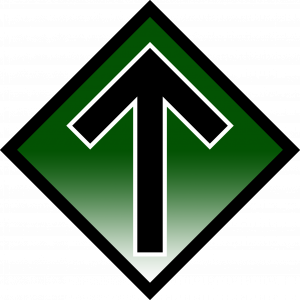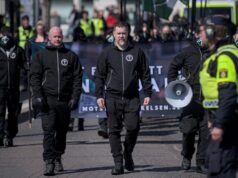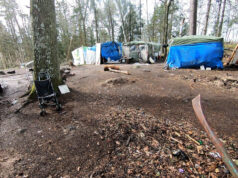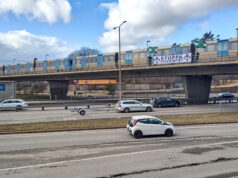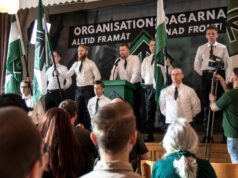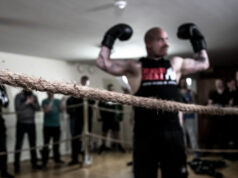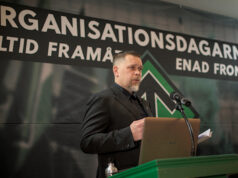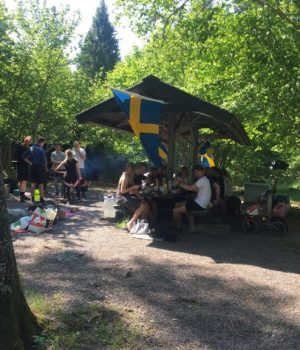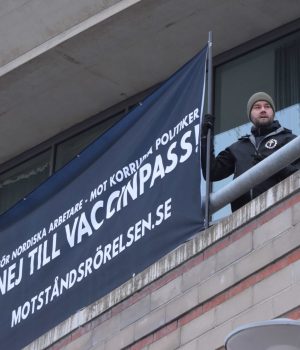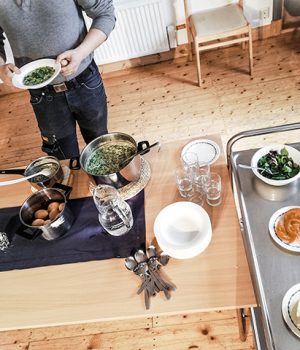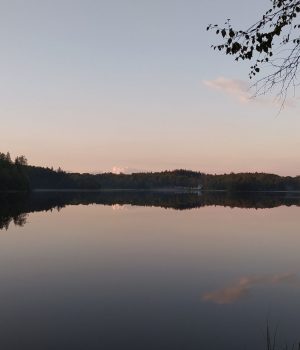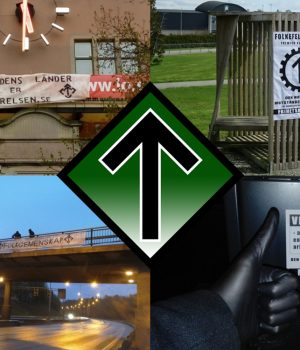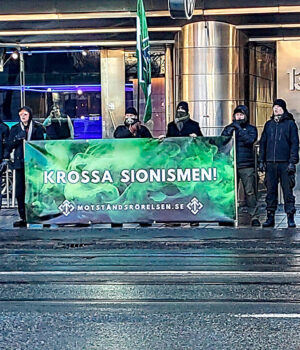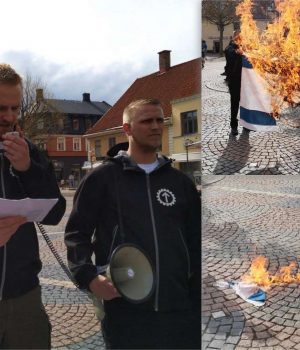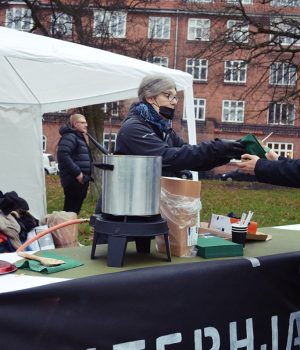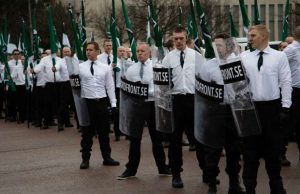RESISTANCE MOVEMENT. Fredrik Vejdeland writes about the Nordic Resistance Movement’s evolution to Resistance Movement 3.0.
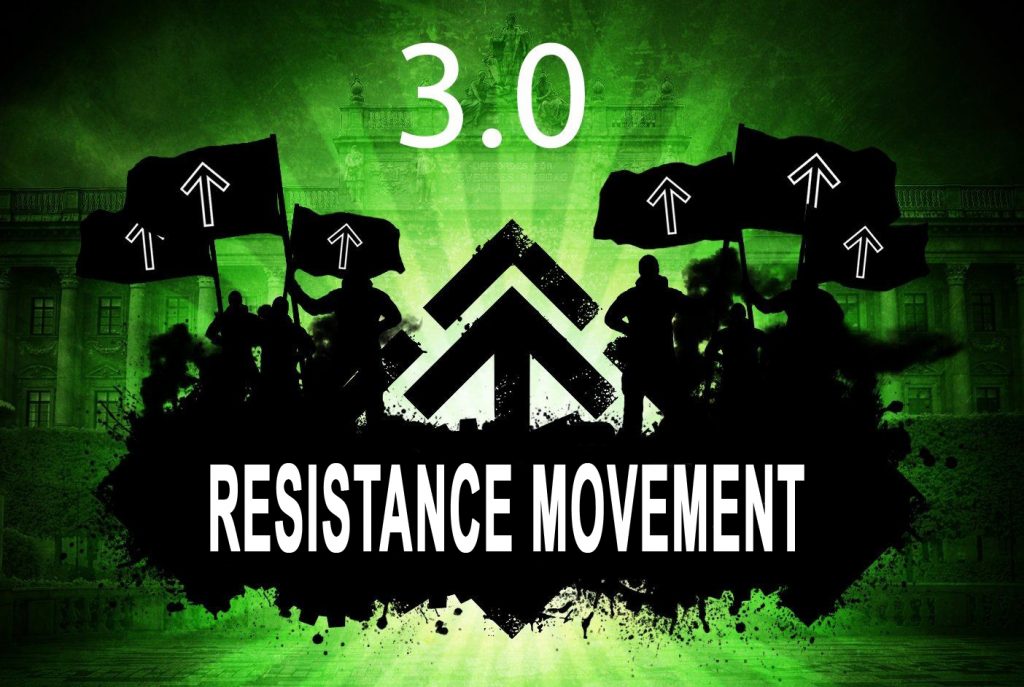
On the most recent episode of Ledarperspektiv, I made some remarks about the idea of a “Resistance Movement 3.0”. Here I’d like to commit those thoughts to writing and expand on what I mean.
It’s my belief that the Resistance Movement is on the path to a new phase in its activities. This is based on what I’ve seen in the types of activities already taking place and how discussions are going internally. We’ve had several meetings in which we’ve spoken about these activity types and we share a unified view.
As we are on the path to Resistance Movement 3.0, that naturally means there was a 1.0 and 2.0. So before I talk about “Resistance Movement 3.0”, I would like to go over the first two phases.
In broadly simplified terms, and with the exception of its very first years, Resistance Movement 1.0 was an organisation that from 1997 to 2012 was street activism based but also very inwardly focussed. Activities largely consisted of public newspaper sales and basic activism. These activities were standardised and so was the message (which was ideological rather than political).
Some in the nationalist movement accused us of being a sect, and even though I believe this depiction was a little unjustified, it was not entirely without truth. We found it very difficult to reach out and acquire new recruits, although that wasn’t something we were particularly concerned about. The goal internally was to create a strong core of activists, which we did. Today people from this core are Resistance Movement chiefs and head up other projects in the organisation not necessarily connected to street activism.
What we did was therefore not incorrect, but we didn’t achieve major results in the short term.
Those familiar with what was initially called the Swedish Resistance Movement will no doubt notice this is an oversimplification of our first era, the earliest years of which comprised the so-called Folktribunen period. At that time, activism did not happen continuously but perhaps a few times a year when a new issue of the organisation’s Folktribunen newspaper came out. Activities then were rather large and hyped up. In between there wasn’t much going on, even though there were still a number of creative activities that were conducted with limited means and generated great propaganda results – a type of action that more closely resembles the Resistance Movement 3.0. These included such activities as confronting racially foreign rapists outside courtrooms. But above all this was a time for Folktribunen, with its many epic exposés and undercover reports. This, however, was perhaps both good and bad. As one of my predecessors once described it, the Resistance Movement was a newspaper with an organisation, and not an organisation with a newspaper.
This may not be a completely fair assessment of the Resistance Movement 1.0, but viewed over a 15-year period, I feel it’s generally accurate. The first years can be seen as a kind of trial stage in which we tested things out without any concrete plans. But when reading the editorials from Folktribunen from that time, and how things were communicated internally, it’s clear that the aim was to build a strong core.
Resistance Movement 2.0 was the phase wherein we improved our propaganda across the board and started recruiting members and becoming a major organisation with mass demonstrations. Important milestones in this period were 2012, when Nordfront was created, and 2014, when our parliamentary branch was founded.
During Resistance Movement 1.0, we were able to produce very good activism videos, but this largely depended on one particularly dedicated person. It was also more of a coincidence that we had such a person with us when this media work was generally the only thing we really excelled at. Beyond that we lacked media platforms we could use to seriously reach out with our activism, which meant that we expended a lot of energy on our activities but saw little return.
To overcome that problem, Nordfront was founded, and just a few years later it had made a massive impact and was the biggest site of its kind in the whole nationalist movement. Afterwards we developed our TV and radio operations, allowing us to reach even more people. Our parliamentary branch was also founded. This helped us recruit members who conducted other activities besides street activism, but with the same goal.
Resistance Movement 3.0 is the phase we are entering into now. It’s a time in which we’re conducting much more creative and spectacular activism, but also activism where we are more relevant, where we respond to something or create opinion ourselves. A common feature of this new type of activism is that we can use limited resources during its execution, but also plan it more thoroughly and work more on propaganda. The result is more “bang for our buck”.
On Ledarperspektiv I listed some recent examples like the action against Tomas Åberg, the quickly organised coronavirus rally outside parliament, the activity against the paedophile Jimmy Nilsson, the boycott action against SAS and more. After the programme aired, more such actions have taken place that perhaps did not get the attention they deserved. These include an activity against an anti-Nordic gym in Gothenburg, snowmobile activism in Luleå, informational posters in Västra Götaland, and repainting LGBTQP stairways in Kristinehamn.
It’s worth mentioning that these types of activities have naturally taken place before, but not as frequently and not across the whole country.
This definitely does not mean that we’ll abandon street activism, basic activism or mass demonstrations, but rather that we’ll add an extra element to our activities now that we’re able to. We have long felt that we’ve sometimes been a bit conventional, but the reality is you can’t just change a whole organisation’s structure with the press of a button.
This phase has emerged organically, but at the same time it has also been guided from above. The first real meetings concerning it took place at some point during the election campaign, when we had already realised we would have to lower our tempo and find other ways of operating as soon as the campaign was over.
In regard to other activities, it must also be mentioned that it’s not just external activism that’s changing. Lectures and social activities have been given more focus since the end of the election campaign. In several nests, monthly lectures have become major events that draw a lot of people from outside the Resistance Movement’s ranks. This is also an area we intend to develop further.
The fact that we’re only starting to see the results of this now is because, as previously mentioned, it simply takes time to change routines and structures, as well as people’s behaviour. It isn’t done magically by decree, especially considering that we chose to retain and incorporate Resistance Movement 1.0 and 2.0 in Resistance Movement 3.0.
The reason we’re operating this way – and will do so even more going forward – is not just because we believe it’s tactically right to work on various fronts to reach out to more people – it’s also about making things more difficult for the system. For example, the system currently attempts to hinder us from arranging mass demonstrations on a regular basis, so we must acquire the ability to conduct flash demonstrations and actions that are more spectacular and dynamic. This gives us the capacity to change tactics when needed and not become easy targets for the system.
I regard this development as immensely positive and see before me a Resistance Movement that is able not only to conduct mass demonstrations but that can also operate in smaller groups when the situation requires it.

